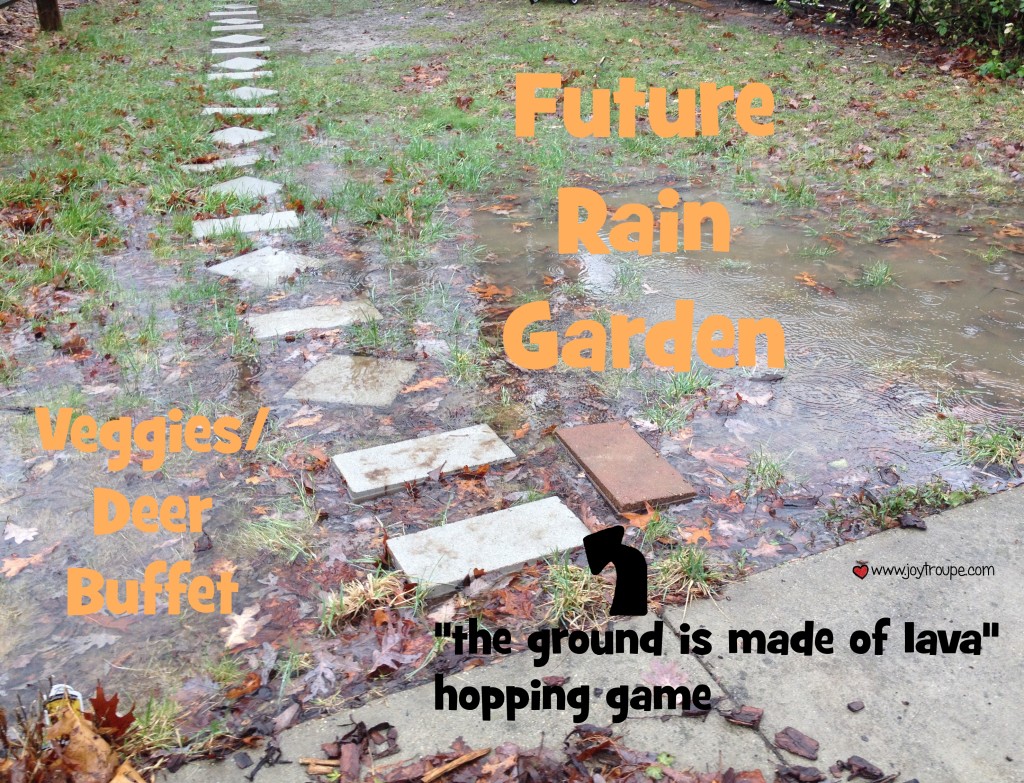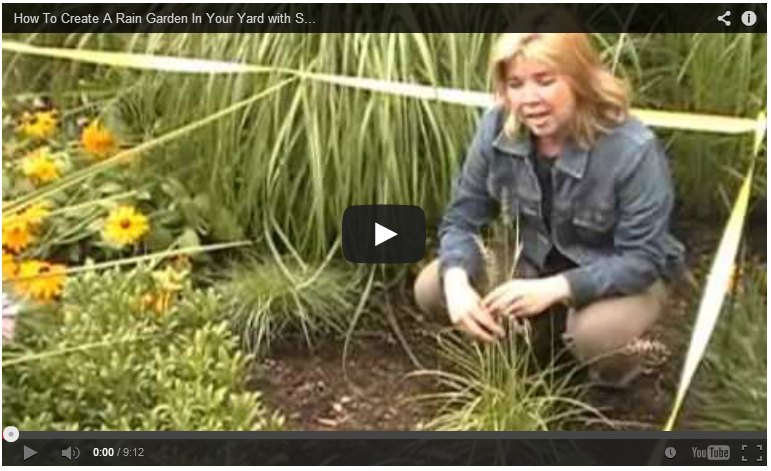But as we’ll inevitably have a drought by summer’s end, if you’re coming, come to stay. We’ve had quite the stormy weekend, and all I can say is… apparently that “out like a lamb” thing is not happening.
 Since I have two of those exotic creatures commonly referred to as “small boys,” I have a mental map of EVERY puddle that forms in my yard. I’ve also run through most of them in hot pursuit of an escapee, because they also know perfectly well where all the puddles are, and they head straight for them. This presents an opportunity for a “lemons to lemonade” back yard science opportunity, so we are going to (literally) dig in and try our hands at creating a rain garden. Since I have several spots that puddle because they are lower than the surrounding ground, as opposed to actually draining poorly, the project has promise. FYI, our accidental butterfly garden is outside this photo to the left and down.
Since I have two of those exotic creatures commonly referred to as “small boys,” I have a mental map of EVERY puddle that forms in my yard. I’ve also run through most of them in hot pursuit of an escapee, because they also know perfectly well where all the puddles are, and they head straight for them. This presents an opportunity for a “lemons to lemonade” back yard science opportunity, so we are going to (literally) dig in and try our hands at creating a rain garden. Since I have several spots that puddle because they are lower than the surrounding ground, as opposed to actually draining poorly, the project has promise. FYI, our accidental butterfly garden is outside this photo to the left and down.
The area to the right of the (mostly above water) paver pathway that currently offers my children the opportunity to stand in the giant puddle while PRETENDING they are obeying all variations of the “don’t get your shoes wet” command is the site I have set my eyes on. In fact, I had dastardly intentions of handing them each a shovel and getting them started on the manual labor under the guise of “fun” today. Rain or no rain, I was prepared to get out there and get them up to their waists in mud. Until I went out to reconnoiter and found out it was SLEETING. There’s an unwritten metorological rule that it has be be unbearably hot here by the middle of April, so we’re apparently going to skip spring altogether this year.
I am counting on this project to offer weeks worth of digging activities. Digging out the “receiving area,” building the berm, and creating the swales that direct water from other parts of the yard should apply a copious amount of dirt to my hooligans. Adding some drought tolerant native plants to this area is basically gardening at my level… if it can’t survive the climate, I have no business growing it. Plans for a garden box on the other side of the path are tentative, but it’s a pretty sunny spot so it seems like it could work out. Assuming we can resolve interference from two legged and four legged pests, that is…
And we can talk about how rain gardens filter pollutants out of the water, prevent erosion and flooding, and help create micro-habitats for wildlife even in urban areas for years to come. But don’t tell them… they think we’re in it for the mud.
How to build a rain garden
For information on how a rain garden works and how to build one, join me on Pinterest:
Follow Meghan Gray’s board In the garden on Pinterest.
Next? I need to figure out what I’m going to do about the waterfall running into the neighbor’s yard and heading straight for their basement windows. But one thing at a time…



2 Comments on “Back Yard Science: Rain, Rain (garden) go away…”